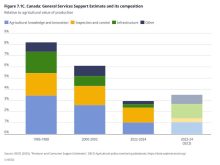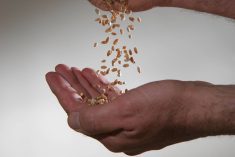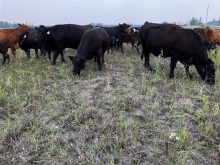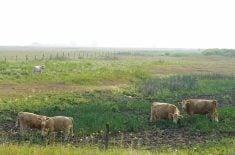“What’s worse?
Having no industry or having countervail?”
– JURGEN PREUGSCHAS, CPC
ACanadian Pork Council meeting April 2 will propose an emergency government aid program as hog farmers enter the third year of their worst economic crisis in memory.
The CPC safety net committee will look for new ways to help beleaguered pork producers because existing programs are inadequate, said Jurgen Preugschas, pork council president.
“We’re looking at programs that we think might help us get through these extremely difficult times and then we’ll make representation to the government to see whether or not they’d be workable,” Preugschas said.
Read Also

Ag Days Gives Back 2026 focuses on fire response
Manitoba Ag Days charitable program, Ag Days Gives Back, returns for 2026 with a new wave of rural community support in Manitoba and southeast Saskatchewan
“It’s very clear that the existing programs aren’t working. They’re not sufficient. At this point we are looking at what else we might add to that to sustain our industry.”
The idea of calling for emergency aid outside existing business risk management programs would have been unthinkable to Canada’s hog farmers a few years back.
Ever since a U. S. trade challenge to Canadian hog and wean-ling exports five years ago, the industry has gone out of its way to avoid farm support programs which could be even remotely seen as countervailable.
But producers say the industry is in such rough financial shape they’re now willing to take the risk.
“The losses over the last 24 months have just been horrendous,” said Bryan Ferriss, a producer from Bowsman and vice-chair of the Manitoba Pork Council.
The CPC committee, which meets April 2 in Ottawa, has no preconceived notions of how a support program might work and how much money to ask for, said Preugschas.
“I think everything’s on the table,” he said. “We want to do some barnstorming and see what might work for producers.”
Preugschas said pork producers are still very sensitive to trade implications. “But right now we’re at the point where we run the possibility of losing another huge percentage of our production if we do nothing.
“What’s worse? Having no industry or having countervail?”
Statistics Canada reports the country lost 28 per cent of its hog producers and roughly 15 per cent of production over the last two years. Preugschas predicted “significantly higher numbers than that before the end of this year if something isn’t done.”
The state of the industry will be high on the agenda at the Manitoba Pork Council annual meeting in Winnipeg April 7. Karl Kynoch, MPC chairman, said he did not expect CPC’s proposal to be ready in time for the meeting.
Earlier this month, Preugschas and other red meat industry representatives told the House of Commons agriculture committee the government should show more concern for the industry and worry less about trade retaliation.
The Saskatchewan government recently announced $71 million in direct payments to its hog and cattle producers. Alberta launched a $356 million livestock strategy last year. Both provinces maintain they had to take action because the federal government wasn’t doing enough to help the industry.
Ottawa last week did extend its $50 million cull breeding swine program, announced in February 2008. Originally, claims covered animals culled between November 1, 2007 and November 30, 2008. A three-month front-end extension now includes cull claims between August 1, 2007 and October 31, 2007.
Gary Stordy, a CPC spokesperson, said the extension will be funded by $15 million not yet spent by the program.
The program aimed at reducing the national swine-breeding herd by up to 10 per cent. But fewer producers registered than expected, perhaps because they didn’t want to be tied down to staying out of production for three years, as the program requires, Stordy said.














